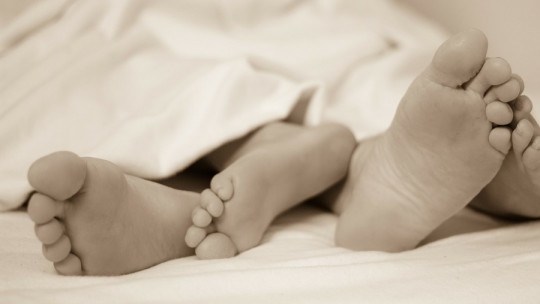
He sexual behavior It is one of the areas of human behavior in which it is most difficult to establish the limit between normal and pathological.
A classification of the main sexual disorders can give us an idea about how this aspect of our behavior is organized. Therefore, we are going to talk a little about each sexual behavior disorder to understand it better.
Sexual disorders: what are they and how do they manifest?
The sexual disorders have been divided into three large groups such as paraphiliasthe sexual dysfunctions and the sexual identity disorders. This way of classifying them offers us a basic outline of the types of sexual and psychosexual disorders.
Below we are going to review each of these large groups to better understand the nature of each sexual disorder, as well as its most common manifestations.
1. Paraphilias
Paraphilias are characterized by intense and repeated sexual fantasies, sexual impulses involving non-human objects, suffering or humiliation own or children or people who do not consent, and who are therefore considered maladaptive, since they damage the quality of life of the individual and/or the people who relate to him. Several of them are the following:
1.1. Exhibitionism
It is a behavior that is characterized by a high level of arousal through the exposure of the genitals to a person spontaneously and successively. It usually predominates in children and adolescents at most 20-30 years old. It occurs more frequently in men and in public places. These people have been described as shy, withdrawn and dependent.
1.2. Voyeurism
It is characterized by the arousal of a person when looking at naked people or engaging in some type of sexual activitythe risk of being discovered acts as an arousal enhancer. It begins in adolescence and can be temporary or chronic. They tend to be shy and have some difficulty in starting or maintaining relationships. Recently, a practice has been reported in some cities that consists of people frequenting places where couples go to have sex. This practice derived from voyeurism has been called Dogging or cancaneo.
1.3. Froteurism
It consists of erotic arousal through friction of the genital organ with the body of another person without their consent. These activities are usually carried out in public places such as the subway, nightclubs or the bus. Froteurism is accompanied by masturbation to the memory. It affects men between 15-20 years old.
1.4. Fetishism
It is the person who Aroused by observing and manipulating inanimate objects such as women’s underwear. They usually masturbate while touching the garment in question. They are usually heterosexual men. Within this we can define transvestite fetishism, which consists of wearing underwear of the opposite sex when they are alone or when they perform the act with their partner. In another article we define the strangest and most curious fetishes.
1.5. Paidophilia
Also known as pedophilia. It is called that disorder characterized by sexual arousal or pleasure through fantasies and behaviors involving sexual activity between an adult and a child between 8-12 years old.
1.6. Sadism
Is the need to inflict harm on another person to become sexually aroused. It involves sexual urges and behaviors that involve actual acts with or without the consent of the victim. The person who practices sadism may or may not rape the victim, even masturbate or penetrate her with objects.
1.7. Masochism
Masochism involves the need to be humiliated, attacked or mistreated to obtain sexual pleasure. It is one of the most clearly harmful paraphilias, since it limits people’s freedom.
Sadomasochism, as a disorder and clinical category, should not be confused with the idea of sadomasochism related to certain types of sexual games based on mutual agreement and that do not limit the person’s ability to find sexual pleasure in other tendencies.
2. Sexual dysfunctions
The sexual dysfunctions They include all the alterations that occur during the sexual act, they can occur at the beginning of sexual life or even later. The causes can be physical, psychological or both. Within this we have several:
2.1. Sexual desire disorders
The main disorders of sexual desire are the following:
3. Sexual identity disorders
Lastly we have the sexual identity disorderswhich refers to the discomfort that a person feels due to their sexual condition along with the desire to be of the other sex. Among these people, the desire to undergo plastic surgery that can transform them into a person with sexual visibility that corresponds to their identity is common.
In this area, there is a long debate about whether conflicts in sexual identity should be considered disorders, or simply sexual preferences, such as the case of homosexuality.
In fact, although the DSM psychiatric diagnostic manual incorporated it in its first four editions, starting with the DSM-V it has taken the step of eliminating Gender Identity Disorder from the list of mental illnesses. However, the WHO continues to consider transsexuality as a disorder.








